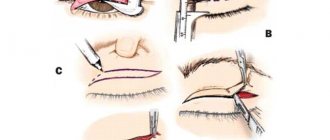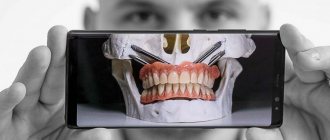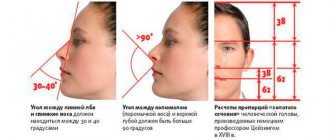06.03.2020
Blepharoplasty is a surgical operation that corrects the shape of the eyelids and the shape of the eyes. The surgeon removes areas of skin, fat layer of the lower and upper eyelids, providing a tightening effect.
The skin in this area ages first and the eyelid droops due to loss of elasticity. After 30 years, subcutaneous fat tissue also undergoes dystrophic changes - it grows and begins to sag. The look becomes tired and expressionless.
Therefore, women and men aged 40–45 who want to eliminate these cosmetic defects most often apply for blepharoplasty. By lifting the skin, the look becomes more open and the face appears younger.
Characteristics of blepharoplasty
The eyes are the most visible part of the face, so they are difficult to constantly hide under a layer of makeup or glasses. In the presence of obvious eyelid defects, the face takes on a tired, eternally dissatisfied appearance. Eyelid surgery comes to the rescue. The operation is aimed at correcting the upper and lower eyelids, in order to get rid of bags under the eyes, excess skin, and excess fatty tissue of the eyelids. Blepharoplasty allows you to achieve the most long-lasting, pronounced cosmetic effect. Plastic surgery makes it possible to get rid of protruding retrobulbar tissue and sagging skin. It is these defects that give the face a haggard, tired look. In this case, lower blepharoplasty is used. And when performing upper plastic surgery, excess skin folds are eliminated, which open up the patient’s view.
What will be the results?
Age negatively affects the condition of the skin of the face, and in the eyelid area, where particularly sensitive and delicate skin is located, it is especially pronounced. The skin of the upper eyelids sags, due to which a person develops not only aesthetic complexes, but also problems with vision. A common cause of swelling of the eyelids are hernias, which create the visual impression of swelling and bags under the eyes. Blepharoplasty will help get rid of skin folds under the lower eyelids and eliminate excess tissue and skin. However, it is worth noting that it is not always possible to get rid of the so-called “crow’s feet”.
Basic tests
Blood analysis
All patients who are going to undergo blepharoplasty must undergo tests before the procedure:
- clinical blood test. It shows not only the degree of hemoglobin, but also the presence of inflammatory processes;
- clinical urine analysis. Based on the results obtained, conclusions are drawn about the presence or absence of diseases of the excretory system;
- coagulogram. It allows you to determine the rate of blood clotting and eliminates one of the contraindications.
The tests are valid for 14 days.
Additionally, blood is taken to determine its group and Rh factor, and examined for the presence of HIV, hepatitis B and C, and antibodies to the causative agent of syphilis. These tests are required not only before blepharoplasty, but also before any other operation. If you have taken them before, make sure that no more than 3 months have passed since the date of delivery.
Also important:
- ECG or electrocardiogram. It helps detect any problems in the heart. If you already have ECG results, check that a month has not passed since the date of the examination;
- Fluorography. Helps detect lung diseases. Usually performed once a year.
Personally, other research methods may be prescribed. For example, in the presence of vision problems or detection of somatic diseases.
Where is eyelid surgery performed?
Eyelid correction is performed exclusively on an outpatient basis, as it requires the use of anesthesia. Norcosis can cause a negative reaction in the body and affect the respiratory system. A consultation with an anesthesiologist is required, who can identify contraindications to any type of anesthesia and clarify your medical history. To perform blepharoplasty, local anesthesia in combination with sedative injections is sometimes sufficient. The patient will experience discomfort only when the drug is administered, since it is injected quite deeply, and the skin in the eye area is sensitive.
Definition of contraindications
First of all, the doctor carefully interviews the patient. He determines whether he has diseases of the heart, kidneys, liver, blood vessels, blood, respiratory and nervous systems, and whether he has allergies to medications. The hereditary factor plays an important role, so the specialist is interested in diseases that close relatives suffered from.
If the patient agrees that he has diseases of his organs and systems, or the doctor suspects a previously undetected pathology, the patient must be thoroughly examined. If there are no serious deviations that could interfere with blepharoplasty, then you can prepare for the operation itself.
An ophthalmological history is also determined. Eye diseases may be a contraindication to surgery. So, the surgeon rarely allows the patient to undergo surgery if he has dry eye syndrome, this can cause complications and lead to an unsatisfactory result.
But this is not a critical contraindication - if the disease is cured, surgery will be scheduled. In the presence of chronic eye diseases, the prognosis is less favorable - blepharoplasty is contraindicated for life in such patients.
The surgeon needs to know about previous eye surgeries, including vision correction. If repeated blepharoplasty is planned, then complete information about the previous intervention will help the surgeon competently plan the operation and anticipate possible complications. In many situations, examination by an ophthalmologist, psychologist, or surgeon before surgery is considered mandatory.
We recommend: Where is blepharoplasty performed?
Is it painful to make a correction?
During the operation, you will not feel pain due to the use of local or general anesthesia. After the procedure, most often, there is no pain either. During the first two days after blepharoplasty, it is recommended to reduce activity and get plenty of rest. Such actions will facilitate rehabilitation and minimize the risk of swelling and complications. In the first time after correction, there may be an increase in sensitivity in the corners of the eyes. To eliminate discomfort, the doctor may prescribe regular paracetamol. Stronger painkillers are not necessary. To reduce swelling, you should sleep only on your back, with the head of the bed raised.
Preoperative preparation
- Two weeks before surgery, you should stop taking aspirin and drugs of this group.
- At least 10 days before surgery, you should stop taking NSAIDs, ginko biloba, vitamins E and C. Avoid alcohol 7 days before surgery.
- Three days before surgery, take Dicinon - 2 tablets 3 times a day, as well as another tablet in the morning on the day of surgery.
- Make sure that you are accompanied home after the operation, because... You won’t be able to drive the car yourself.
- On the eve of the operation, you should wash your hair and face. Wash thoroughly immediately before surgery.
Is surgery performed only on older patients?
Blepharoplasty is not only performed on older patients. Indications for this procedure include not only age-related changes, but also congenital or acquired eyelid defects. And age is an individual matter, everyone has their own aging process. During your appointment, the plastic surgeon will tell you whether plastic surgery is worth it and will recommend the most appropriate technique in your case.
Tests for additional examination
If the doctor doesn’t like something in your tests, he will additionally prescribe the following:
- blood chemistry. Determines the level of bilirubin, enzymes and other substances that help identify disorders in the liver and kidneys;
- plain radiograph. Its purpose is additional examination of the chest organs. Prescribed when determining changes in a fluorography image;
- echocardiography. Allows examination of the myocardium and valves.
We recommend: Classic blepharoplasty technique
By the way, poor research results are not always a reason to refuse surgery. The final decision on each case is usually made at a consultation, where doctors study the patient’s condition and weigh the risks.
External factors can influence the results, changing them for both better and worse. Therefore, the main thing is to prepare not only for the operation, but also for the examination itself.
How does the healing process proceed?
When performing surgery on the upper or lower eyelids, slight bruising will be present in any case. Ideally, they should disappear within a month. Moderate swelling is also observed, most noticeable in the area of the edges of the postoperative wound. During sleep, the eyes may be slightly open, this is caused by a weakening of the muscle tone of the eyes. In this case, the doctor may prescribe a special eye ointment, which is designed to keep the cornea from becoming infected and drying out.
A month after eyelid surgery, the patient may feel dry eyes. This is due to the fact that removing excess skin provokes more dust. It is recommended to blink more often at this time to moisturize the cornea. Over time, the eyes adapt to the new condition.
If during the rehabilitation process you feel increased fatigue and weakness, do not panic. This is a normal state when all the body’s forces are directed towards the healing process. You can wash your hair and shower the day after surgery. For the first week, you should avoid eyelid makeup.
Features of eyelid blepharoplasty
The duration of the operation depends on the complexity of the particular case and usually takes 1-2 hours. The patient is dressed, then photographed, after which the surgeon marks the area of the planned incisions. After preliminary anesthesia, the operation begins. An incision is made on the lower eyelid, just below the edge of the eyelashes. In the upper eyelid, an oval of skin between the marks is removed, then excess fatty tissue is removed and the small blood vessels in the area are cauterized.
Although the definite result—a quicker, more alert look and less puffiness around the eyes—appears quite early in many patients, the final result cannot be judged in less than six months.
The technique of eyelid blepharoplasty may vary depending on individual characteristics. The incisions made in the skin are closed with an intradermal suture. All patients develop “bruises” under the eyes, which disappear without a trace after 2-3 weeks. Other, more serious complications, namely decreased vision or damage to the cornea, are theoretically possible, but in practice almost never occur. When the effect of the anesthetic wears off, a tingling sensation occurs, a slight beating, which can be relieved with analgesics. A few hours after eyelid blepharoplasty, the patient can go home wearing dark glasses.
Possible complications of eyelid blepharoplasty
As with all plastic surgeries, the best results are observed when the patient follows all the instructions and precautions provided by the doctor. After eyelid blepharoplasty, for 1.5-2 months, it is necessary to avoid strong physical activity to prevent the occurrence of late complications. As with any other surgical intervention, and after it, various general surgical complications may arise, as well as specific complications that may require corrective surgery in the future: conjunctivitis may occur, which disappears after appropriate therapy, in rare cases after lower back surgery the eyelids may experience slight inversion; this condition disappears after appropriate conservative therapy; in rare cases, corrective surgery may be required. Features of blepharoplasty when correcting the eastern incision of the eyes It is also possible for the formation of keloid scars along the lines of skin incisions, which is a rather rare complication and is associated with the individual reaction of body tissues to surgical intervention and does not depend on the quality of the operation. But, in general, if you follow all the doctor’s recommendations, surgical eyelid blepharoplasty guarantees a long-lasting and successful result. When it's time for facial plastic surgery: every age has its own choice
Watch us on YouTube:
Share:
Preparation for eyelid surgery
On the eve of the operation, the doctor will prescribe all the necessary tests for you. A month before blepharoplasty, you need to stop taking medications that can slow down the healing process. Be sure to have a good rest and sleep before undergoing plastic surgery, you will need strength. Arrange with someone from your family to accompany you home after the correction and stay with you for two days. This will not only give you the opportunity to have a good rest, but will also help you avoid any physical labor associated with household chores.
And, remember, a positive attitude and faith in the result play a big role. Blepharoplasty has been performed for many years, and there are many qualified, experienced specialists who will perform the operation as carefully as possible, without the risk of complications.
How to choose the right clinic and plastic surgeon?
Before blepharoplasty, you not only need to undergo an examination, but also choose a place for the operation and a doctor. It is necessary to rely on the following points:
- doctor's qualifications;
- practical experience of a doctor;
- elegant results.
A qualified and experienced surgeon always has a good portfolio so that the client can compare photos before and after the operation, which should be on the official website of the clinic. It is on the basis of photographs that the client can draw a conclusion about the quality of the operation performed, as well as whether the doctor uses an individual approach to each of his patients.
We recommend: What to do if there are still hernias after blepharoplasty?
If the doctor has a video portfolio, then ask to show it at a personal consultation: this is the only way to learn about the surgeon’s qualifications, caution and meticulousness in relation to his work.










